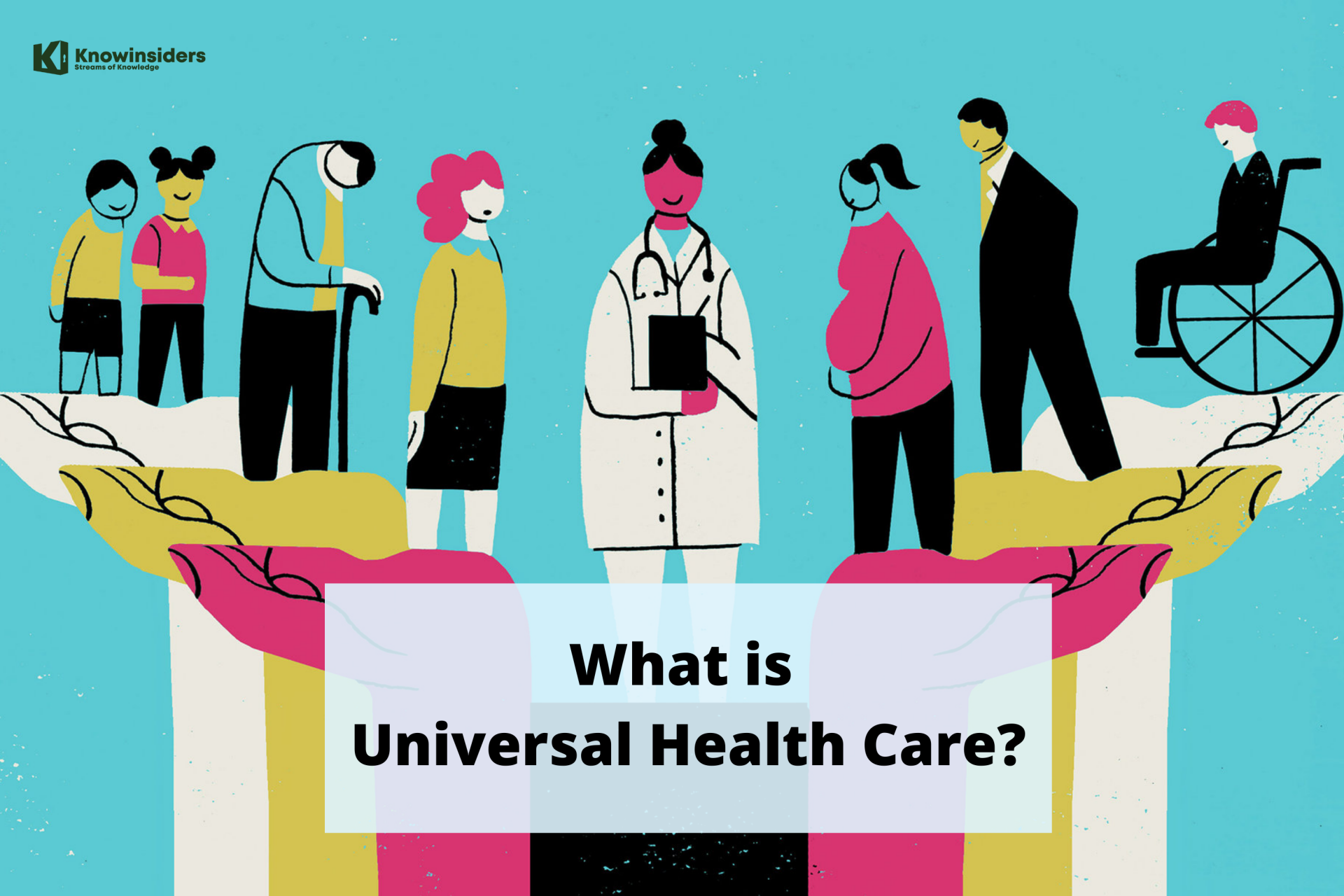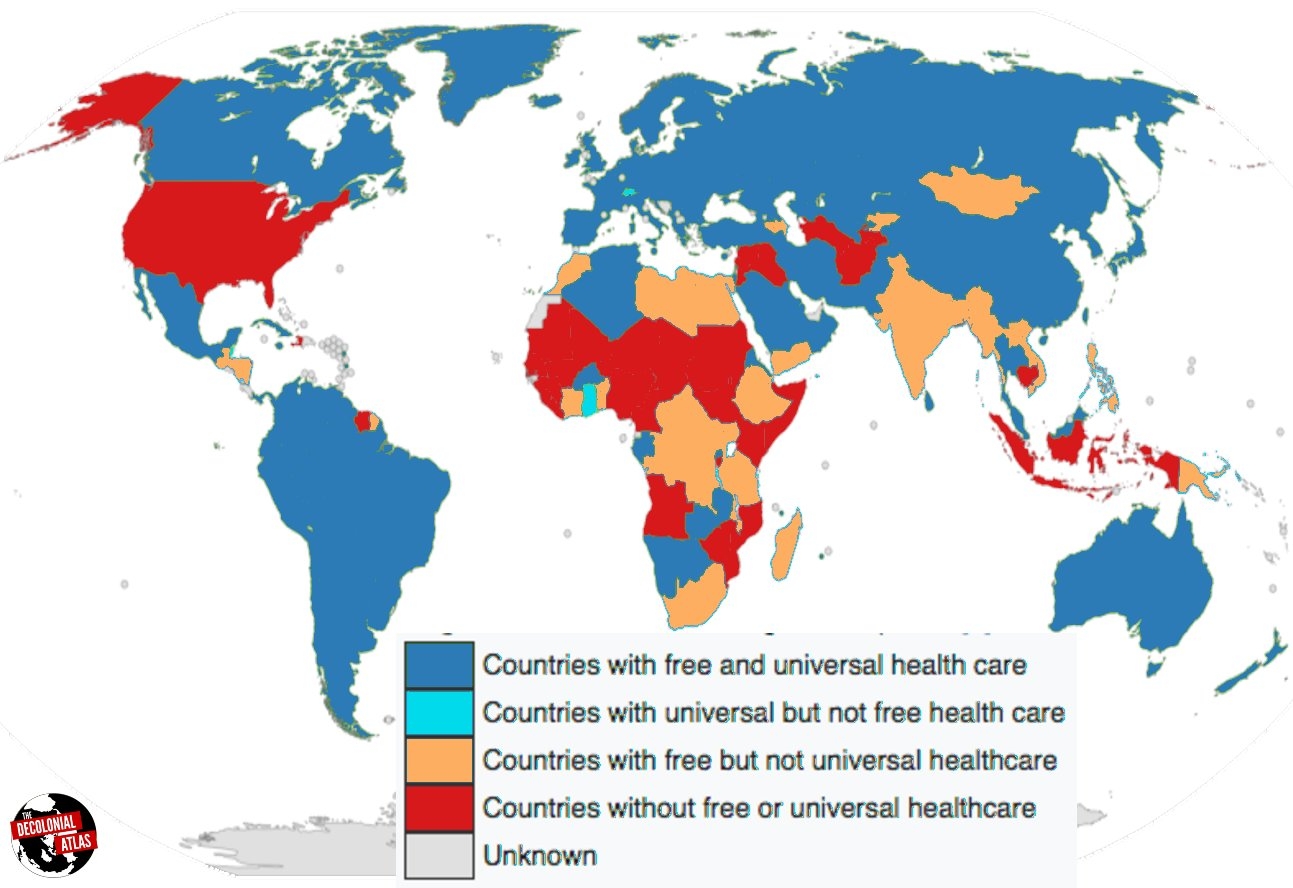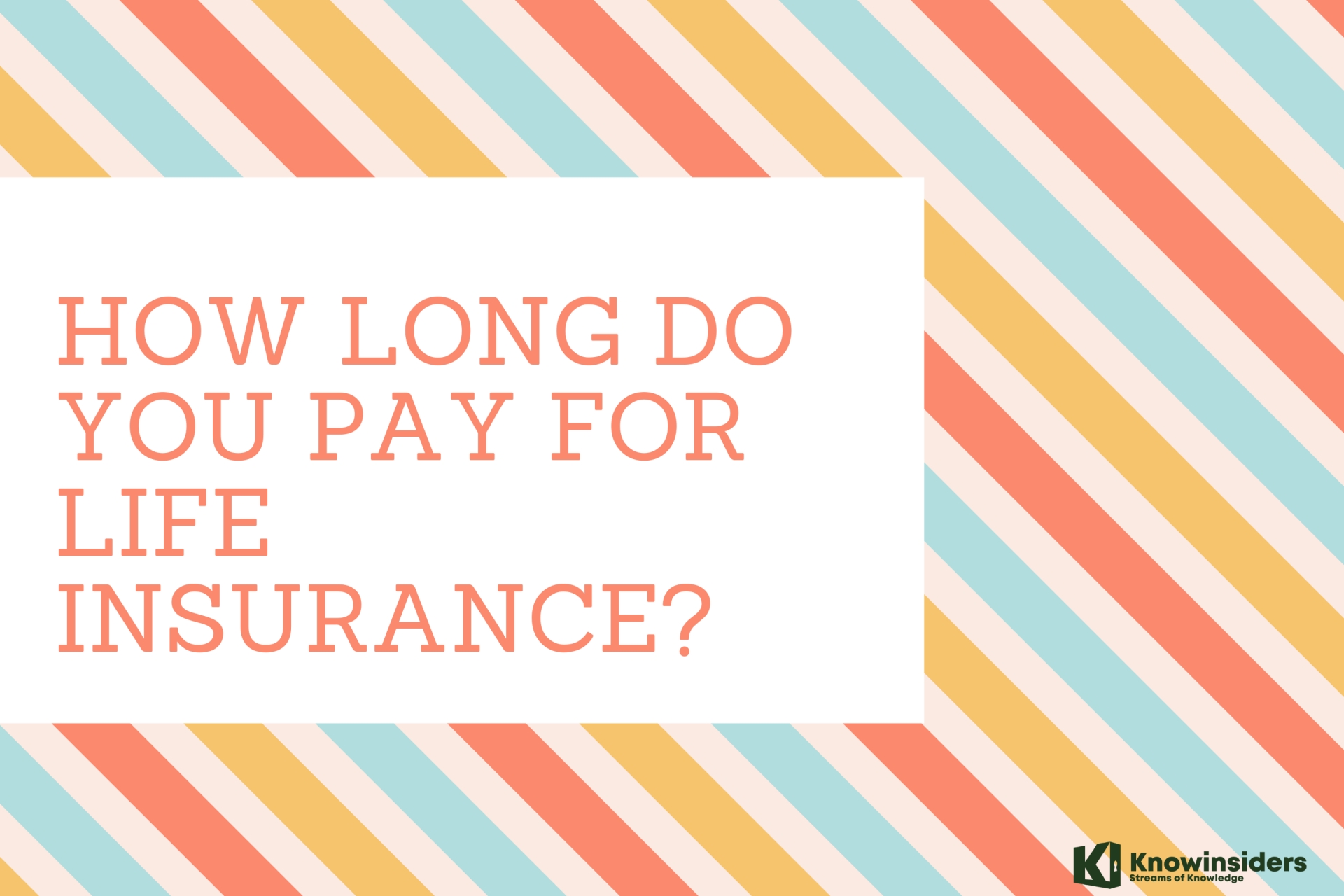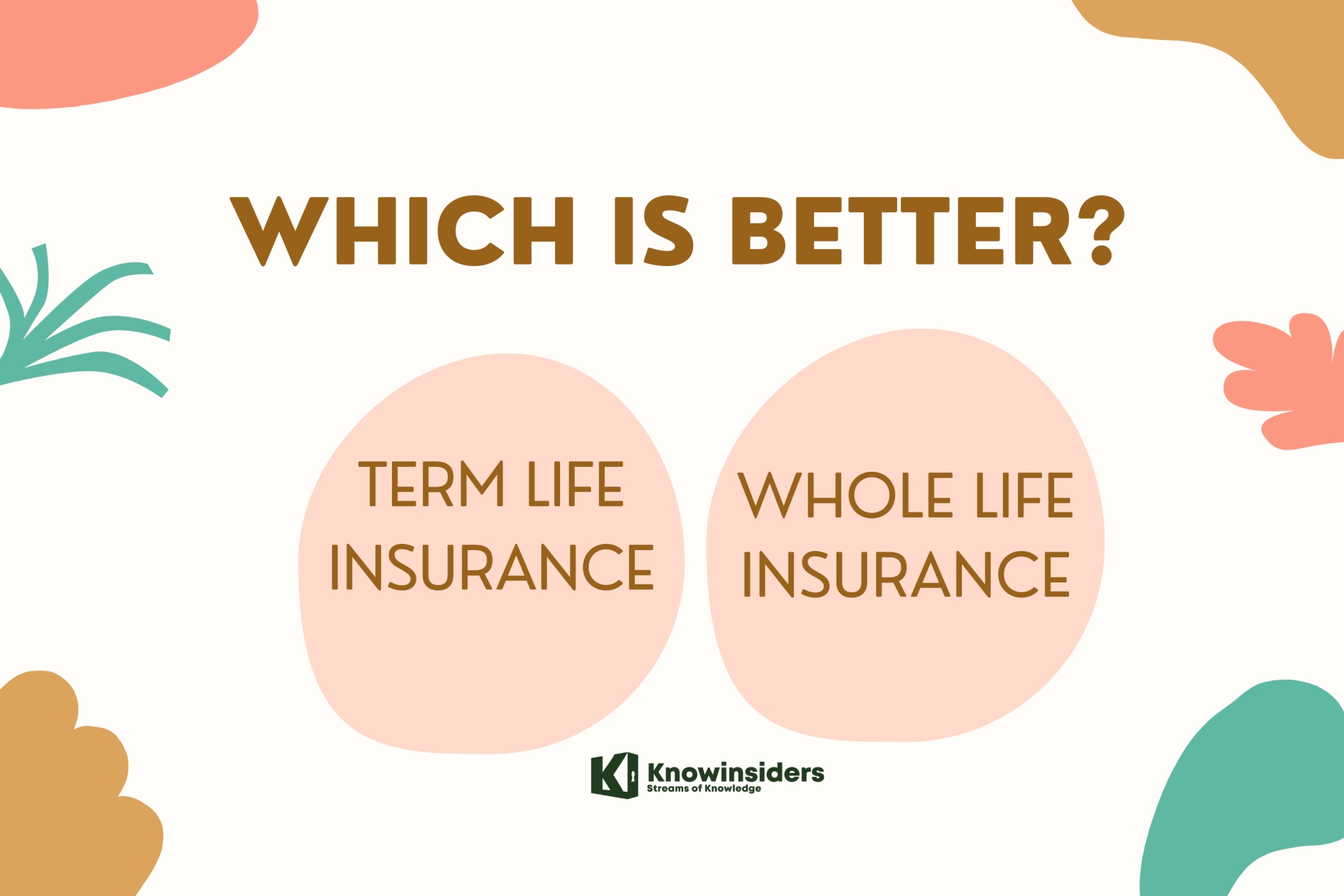What is Universal Health Care: Meaning, Types, Benefits
 |
| Photo: KnowInsiders |
Universal health care is a system that provides quality medical services to all citizens. The federal government offers it to everyone regardless of their ability to pay.
Below you will find a primer on universal health care, including the benefits, the potential disadvantages, and why it’s such a hot topic in the United States.
What Is Universal Health Care?
Universal health care is a broad term that encompasses any action that a government takes to provide health care to as many people as possible. Some governments do this by setting minimum standards and regulations and some by implementing programs that cover the entire population. But the ultimate goal is health coverage for all citizens.
Universal health care comes in several different forms, but the basic idea is the same across the board: The government steps in with taxpayer money to ensure that every citizen has access to the medical care they need. With universal health care, no citizen is denied coverage based on their ability to pay.
The sheer cost of providing quality health care makes universal health care a large expense for governments. Medical coverage must be paid for by taxpayer-funded programs.
Thirty-two countries in the world have universal health care, including Canada, much of Europe, several Asian countries, Australia, and New Zealand.2 The U.S. has the distinction of being the only wealthy, industrialized nation without universal health care.
Acronym: UHC
* Note: Although the U.S. does not have a UHC system, its health delivery system does have specific components, such as Medicare, Medicaid, and the Department of Veterans Affairs, that provide universal health care to specific populations (the elderly, low-income, and veterans, respectively).
Types of Universal Health Care
There are essentially three ways to provide universal health care.
1. Socialized medicine. In this case, all hospitals would be owned by the government and all doctors and nurses would be government employees. The United Kingdom’s National Health Service, or NHS, is an example of this type of system. Over time, it has proven to be one of the most cost-effective systems. However, both doctors and patients have less choice in the range of treatments and procedures that are available to them.
2. Single-payer system. The second solution is to have a single-payer system, like Canada. Under a single-payer system, the government provides health insurance for everyone, but doctor’s offices and hospitals are still private businesses or nonprofits. This type of system allows people more choice between doctors and hospitals with different approaches to care, but it also costs more than socialized medicine.
3. Private insurance. The third system is to allow private insurance companies but regulate them and mandate that everyone purchase some type of health insurance plan. Switzerland has regulated health insurance and the Affordable Care Act, which was passed in 2010, is an attempt to build a mandated health insurance system in the United States. Regulated health insurance systems allow for the most consumer choice, but they are also the most expensive.
Countries With Universal Healthcare - Health Coverage Around the World
The Organisation for Economic Co-operation and Development includes 38 member countries. Most of them have achieved universal coverage with 100% of their population covered by core health benefits. But in seven of the countries (Chile, Estonia, Hungary, Mexico, Poland, the Slovak Republic, and the United States), less than 95% of the population has comprehensive health coverage.9
According to recent U.S. Census data, only 92% of the U.S. population was insured in 2019.1 The U.S. is near the bottom of the OECD countries in terms of the percentage of its residents with health coverage, but it also spends far more of its GDP on health care than any of the other member countries.9
Let's take a look at the various ways that some countries have achieved universal or near-universal coverage:
Germany
Germany has universal coverage but does not operate a single-payer system. Instead, everyone living in Germany is required to maintain health coverage. Most employees in Germany are automatically enrolled in one of more than 100 non-profit "sickness funds," paid for by a combination of employee and employer contributions.
Alternatively, there are private health insurance plans available, but only about 10% of German residents choose private health insurance.10
Singapore
Singapore has universal coverage, and large health care expenses are covered (after a deductible) by a government-run insurance system called MediShield. But Singapore also requires everyone to contribute 4% to 10.5% of their income to a MediSave account.11
When patients need routine medical care, they can take money out of their MediSave accounts to pay for it, but the money can only be used for certain expenses, such as medications on a government-approved list.
In Singapore, the government directly subsidizes the cost of health care rather than the cost of insurance (in contrast with the approach that the United States takes with coverage purchased through the ACA health exchanges, in which the cost of the health insurance is subsidized). As a result, the amount people have to pay for their healthcare in Singapore is much lower than it would be under the U.S. model.
Japan
Japan has universal coverage but does not use a single-payer system. Coverage is mainly provided via thousands of competing health insurance plans in the Statutory Health Insurance System (SHIS).
Residents are required to enroll in coverage and pay ongoing premiums for SHIS coverage, but there is also an option to buy private, supplemental health insurance.12
By implementing a less burdensome single-payer model (rather than the separate government, private, and government-linked private health insurance mechanisms that are used in the United States), governments like Japan are able to better streamline their national healthcare delivery.
United Kingdom
The United Kingdom is an example of a country with universal coverage and a single-payer system. Technically speaking, the U.K. model can also be classified as socialized medicine since the government owns most of the hospitals and employs the medical providers.
Funding for the U.K. National Health Service (NHS) comes from tax revenue. Residents can purchase private health insurance if they want to. It can be used for elective procedures in private hospitals or to gain faster access to care without the waiting period that might otherwise be imposed for non-emergency situations.13
 |
| Photo: Twttier |
Many countries have universal health care policies in place. Those nations include:
• Albania, Algeria, Andorra, Antigua and Barbuda, Argentina, Australia, Austria
• Bahamas, Bahrain, Barbados, Belarus, Belgium, Belize, Bhutan, Bolivia, Bosnia and Herzegovina, Botswana, Brazil, Brunei Darussalam, Bulgaria, Burkina Faso
• Canada, Chile, China, Colombia, Cook Islands, Costa Rica, Croatia, Cuba, Cyprus, Czech Republic
• Denmark
• Ecuador, Eritrea, Estonia
• Fiji, Finland, France
• Gabon, Georgia, Germany, Ghana, Greece, Guernsey, Guyana
• Hong Kong, Hungary
• Iceland, Iran, Isle of Man, Israel, Italy
• Jamaica, Japan, Jersey
• Kazakhstan, Kiribati, Kuwait
• Latvia, Liechtenstein, Lithuania, Luxembourg
• Macau, Macedonia, Malaysia, Maldives, Malta, Mauritius, Mexico, Moldova, Monaco, Montenegro
• Namibia, Netherlands, New Zealand, Niue
• Oman
• Pakistan, Palau, Panama, Paraguay, Peru, Poland, Portugal
• Qatar
• Romania, Russia, Rwanda
• Saint Lucia, Saint Vincent and the Grenadines, Samoa, San Marino, Saudi Arabia, Serbia, Seychelles, Singapore, Slovakia, Slovenia, South Korea, Spain, Sri Lanka, Sweden, Switzerland
• Taiwan, Thailand, Timor-Leste, Tonga, Trinidad and Tobago, Tunisia, Turkey, Tuvalu
• Ukraine, United Arab Emirates, United Kingdom, Uruguay, Uzbekistan
• Vanuatu, Venezuela
• Zambia
List of the nations that offer free or very low-cost healthcare to all of its citizens
• Albania, Algeria, Andorra, Antigua and Barbuda, Argentina, Armenia, Australia, Austria, Azerbaijan
• Bahamas, Bahrain, Bangladesh, Barbados, Belarus, Belgium, Benin, Bhutan, Bolivia, Bosnia and Herzegovina, Botswana, Brazil, Brunei Darussalam, Bulgaria, Burkina Faso
• Cabo Verde, Canada, Central African Republic, Chile, China, Colombia, Congo, Cook Islands, Costa Rica, Croatia, Cuba, Cyprus, Czech Republic, Cote d’Ivoire
• the Democratic Republic of the Congo, Denmark, Djibouti
• Ecuador, Egypt, El Salvador, Equatorial Guinea, Eritrea, Estonia, Eswatini, Ethiopia
• Fiji, Finland, France
• Gabon, Georgia, Germany, Greece, Guatemala, Guernsey, Guyana
• Honduras, Hong Kong, Hungary
• Iceland, India, Iran, Ireland, Isle of Man, Israel, Italy
• Jamaica, Japan, Jersey
• Kazakhstan, Kiribati, Kuwait, Kyrgyzstan
• Laos, Latvia, Lesotho, Libya, Liechtenstein, Lithuania, Luxembourg
• Macau, Macedonia, Madagascar, Malawi, Malaysia, Maldives, Malta, Mauritius, Mexico, Moldova, Monaco, Mongolia, Montenegro, Morocco, Myanmar
• Namibia, Nauru, Nepal, Netherlands, New Zealand, Nicaragua, Niue, North Korea, Norway
• Oman
• Pakistan, Palau, Panama, Papua New Guinea, Paraguay, Peru, Philippines, Poland, Portugal
• Qatar
• Romania, Russia, Rwanda
• Saint Lucia, Saint Vincent and the Grenadines, Samoa, San Marino, Saudi Arabia, Serbia, Seychelles, Singapore, Slovakia, Slovenia, Solomon Islands, South Africa, South Korea, Spain, Sri Lanka, Sweden, Switzerland, Sao Tome, and Principe
• Taiwan, Tanzania, Thailand, Timor-Leste, Togo, Tonga, Trinidad and Tobago, Tunisia, Turkey, Tuvalu
• Uganda, Ukraine, United Arab Emirates, United Kingdom, Uruguay, Uzbekistan
• Vanuatu, Venezuela, Vietnam
• Yemen
• Zambia
 Best Tips To Purchase Health Insurance Best Tips To Purchase Health Insurance Buying insurance is a significant investment, and you’ll want to invest wisely. Check out this article to know 10 tips to consider before buying health ... |
How Does Health Care Work in the United States?
 |
| Photo: Healthline |
The U.S. operates primarily on a system of private healthcare, which is supplemented by plans such as Medicare and Medicaid that are administered by the federal government.
Many individual states provide their own variants on government health care. For instance, MediCal is California’s state implementation of Medicaid.
Despite the variety of available programs, the United States does not have universal coverage. While the Affordable Care Act (also known as Obamacare) vastly expanded the number of Americans with coverage, it is not a universal health care system. Under the ACA, medical care is primarily financed by private insurers, while the government provides a subsidy to allow more citizens to participate in a private health insurance program. The ACA also prohibited private insurers from denying coverage to clients with a pre-existing condition—or from charging those individuals higher insurance premiums.
Advantages and Disadvantages of Universal Health Care
Advantage | Disadvantages |
| • Lowers overall health care costs: The government controls the prices through negotiation and regulation. • Lowers administrative costs: Doctors only deal with one government agency. For example, U.S. doctors spend four times as much as Canadians dealing with insurance companies. • Standardizes service: In a competitive environment like the United States, health care providers must also focus on profit. They do this by offering the newest technology. They also offer expensive services and pay doctors more, competing to target the wealthy. A universal system takes away the profit motive and focuses on providing equal care for all. • Creates a healthier workforce: Studies show that preventive care reduces the need for expensive emergency room usage. Without access to preventive care, 46% of emergency room patients went because they had no other place to go. They used the emergency room as their primary care physician. This health care inequality is a big reason for the rising cost of medical care. • Prevents future social and health costs: Preventive care can prevent future health issues and improve outcomes in the most vulnerable communities. • Guides the population toward healthier choices: Better investment in health care, health infrastructure, and public education can help push the population toward healthier choices and lifestyles. | • Healthy people pay for the care of the sickest: Chronic diseases make up 90% of health care costs.12 The sickest 5% of the population creates 50% of total health care costs, while the wealthiest 50% only creates 3% of the costs.13 However, this is true even outside of universal health care systems, as spending on chronic diseases will raise the cost of private health insurance plans as well. • Less financial incentive to stay healthy: Without a copay, people might overuse emergency rooms and doctors. • Long wait times: The government focuses on providing basic and emergency health care, so wait times for elective procedures can be much longer. • Doctors incentivized to cut care to lower costs: Government cost-cutting can lead to reduced availability of care. For example, doctors report Medicare payment cuts will force them to close many in-house blood testing labs. • Costs may overwhelm government budgets: Health care costs make up a significant portion of government budgets. For example, some Canadian provinces spend almost 40% of their budgets on health care. • Government may limit those services with a low probability of success. This includes drugs for rare conditions and expensive end-of-life care. In the United States, care for patients in the last year of life makes up between 13% and 25% of the Medicare budget. |
Differences Between Universal Coverage and Single-Payer
While single-payer systems generally include universal coverage, many countries have achieved universal or near-universal coverage without using a single-payer system. Let's take a look at what the two terms mean, and some examples of how they're implemented around the world.
Universal Coverage
Universal coverage refers to a health care system where every individual has health coverage. This can be accomplished under a government-run health coverage system, or a private health insurance system, or a combination of the two.
A system of "universal coverage" can mean two slightly different things. First, it can refer to a system where every citizen can access either public or private health insurance. Second, it can refer to a system where every citizen automatically obtains free or low-cost basic services (prevention, emergency medicine) for a government-mandated set of standard benefits.
In the United States, the goal of universal coverage animated the adoption of the Affordable Care Act—sometimes called Obamacare. Under the ACA, health insurance companies could offer specific health policies with a mix of benefits required by law. For people who fall at certain percentages of the federal poverty line, a sliding scale of public subsidies pay some or all of their premiums. The intended net effect was that anyone, regardless of income, could afford at least a reasonable basic health-insurance plan.
While nearly 20 million previously uninsured Americans gained coverage under the ACA, as of 2019 there are still around 28 million nonelderly adults without insurance in the US, about 10% of the population.
According to the U.S. Census Bureau, there were 26.1 million people in the U.S. who had no health insurance coverage in 2019.1 This is far lower than the 45.6 million people who were uninsured in 2012, before the bulk of the Affordable Care Act (ACA) was implemented,2 but it's clearly not universal coverage. For many years, the lack of universal health coverage has made the U.S. stand out from other similarly-developed countries.3
In contrast, there are no uninsured Canadian citizens; their government-run system provides universal coverage. Thus, Canada has universal health care coverage, while the United States does not.
Single-Payer Systems
On the other hand, asingle-payer system is one in which the government is responsible for paying health care claims, using money collected via the tax system. So the government is the only (ie, single) payer.
There are currently at least 17 countries that use a single-payer system, including Norway, Japan, United Kingdom, Kuwait, Sweden, Bahrain, Brunei, Canada, United Arab Emirates, Denmark, Finland, Slovenia, Italy, Portugal, Cyprus, Spain, and Iceland.5
But single-payer systems can also be implemented without covering the entire population. So a country can have one or more single-payer programs and still not achieve universal coverage. This is what we see in the U.S., with a combination of single-payer coverage for some people, private coverage for others, and tens of millions of people who have no coverage at all.
In a single-payer system, however, there are no private insurance companies, to begin with. The government alone authorizes and pays for health benefits. The classic example of a single-payer system is Great Britain's National Health Service; the NHS controls access to healthcare resources and even employs the healthcare providers. Canada offers a similar scheme
Some members of the U.S. progressive movement have suggested that the United States could arrive at a form of single-payer health care by offering "Medicare for All"—that is, by taking the government-payer program for the elderly and universalizing it to all citizens. The idea has gained traction in recent years, with November 2019 polling showing that a majority of Americans support a Medicare for All program and Medicare for All legislation co-sponsored by half of the House Democratic caucus.
| Medicaid is sometimes referred to as a single-payer system, but it is actually jointly funded by the federal government and each state government. So although it's a form of government-funded health coverage, the funding comes from two sources rather than one. |
Public-Private Partnerships
Throughout the world, many countries offer health care universally, to all their citizens, in public-private combinations, and not through single-payer systems. Examples of these countries include Germany, the Netherlands, and Singapore. Singapore enjoys one of the most successful health systems in the world, with long life expectancies and low infant mortality rates.
Managing Risk
In any system where private insurers play a role in healthcare financing, individual health insurance companies must balance the ratio of sick-to-healthy in their consumer base in part through the value-added products and services they offer atop government minimums, and how those extras are priced in the open market.
In some places, the government protects the insurers against significant loss in part by "penalizing" insurers whose risk profiles performed better than average and then equalizing the costs. This approach is called risk adjustment.
Two-Tier Systems: Public Plan Supplemented With Private Coverage
In most cases, universal coverage and a single-payer system go hand-in-hand, because a country's federal government is the most likely candidate to administer and pay for a health care system covering millions of people.
It is difficult to imagine a private entity like an insurance company having the resources, or even the overall inclination, to establish a nationwide health care coverage system.
However, it is very possible to have universal coverage without having a full single-payer system, and numerous countries around the world have done so. Some countries operate a two-tier system in which the government provides basic health care via a single-payer system, with secondary coverage available for those can afford a higher standard of care.
Two-thirds of Canadians, for example, purchase supplemental private coverage for dental, vision, and prescription drugs, because the government-run plan doesn't provide those benefits. And in France, nearly everyone has supplemental coverage that pays the out-of-pocket medical costs (deductibles and copays) that they would otherwise have to pay under the government-run plan.
 What Type of Life Insurance is Best for You? What Type of Life Insurance is Best for You? How many different types of life insurance? What is the best for you? |
 How Long to Pay For Life Insurance & Guide to Caculate How Long to Pay For Life Insurance & Guide to Caculate When you buy life insurance, the most important thing to understand is how long you will pay for that. How to count the period of ... |
 Term Life & Whole Life Insurance: Which Is Better? Term Life & Whole Life Insurance: Which Is Better? Are you considering between term life insurance and while life insurance? This article might give you suggestions to make decision. |


























